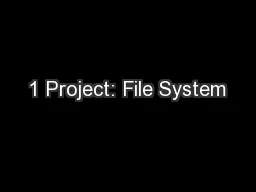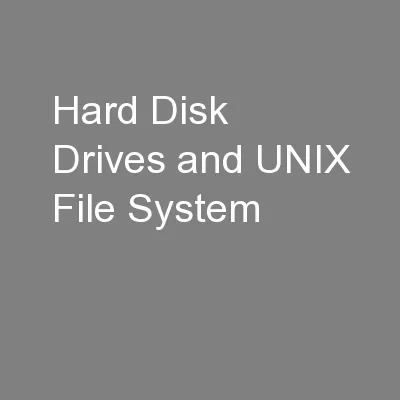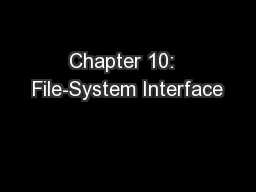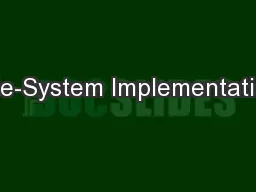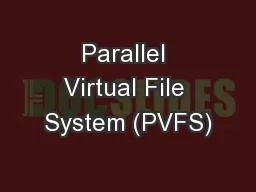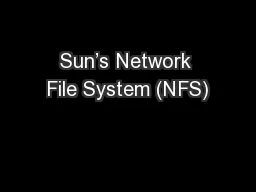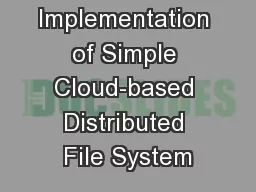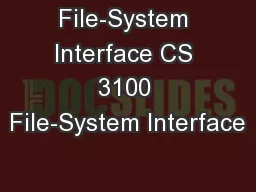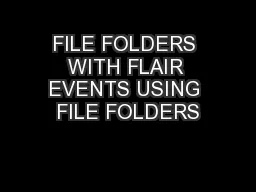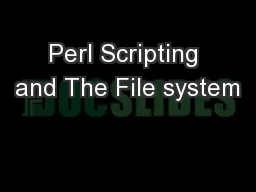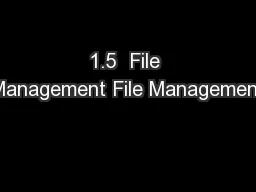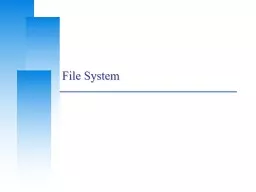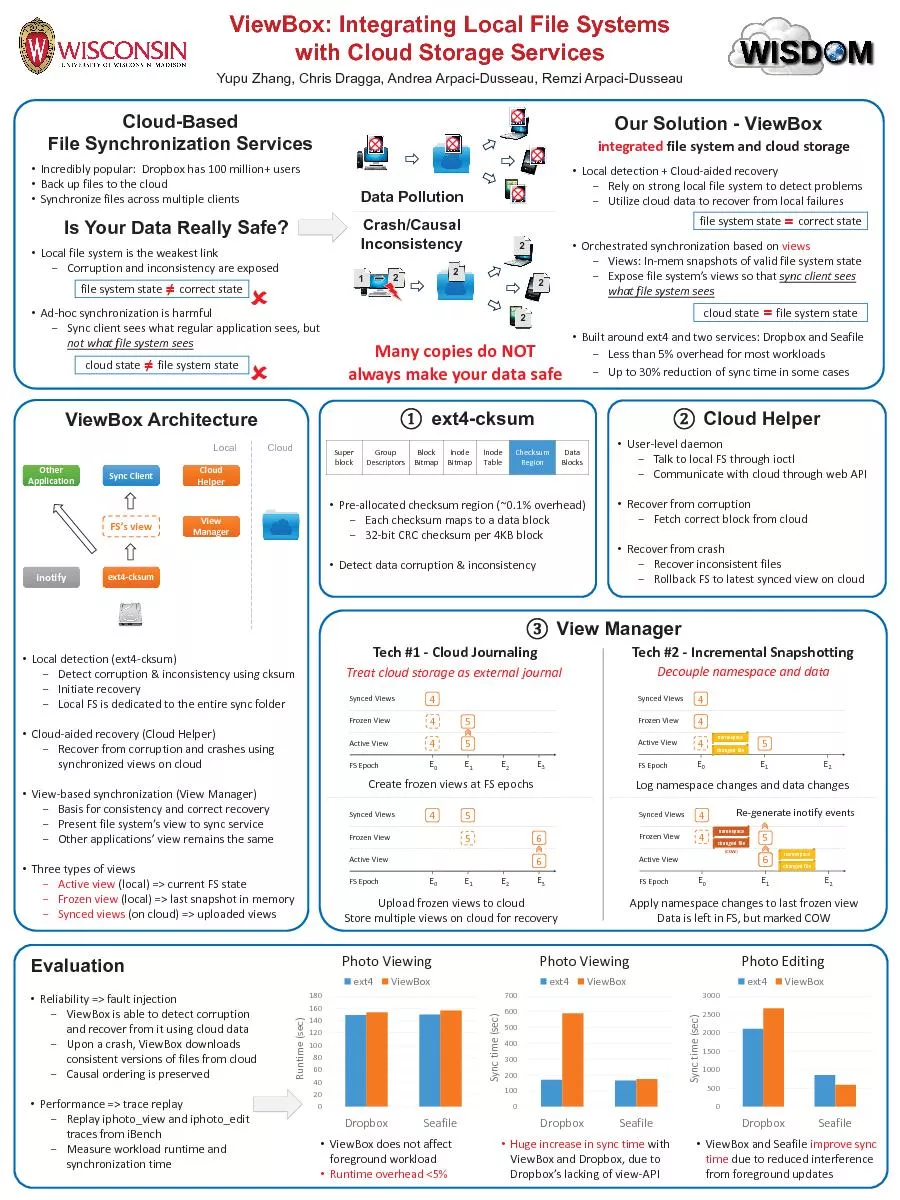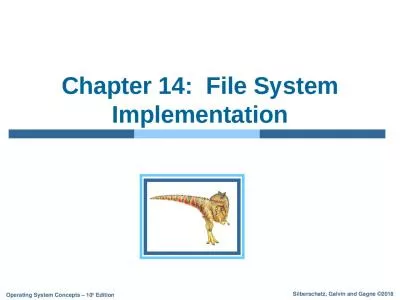PPT-1 Project: File System
Author : giovanna-bartolotta | Published Date : 2017-10-22
Textbook pages 501506 Lubomir Bic 2 Assignment Design and implement a simple file system using ldisk a file to emulate a physical disk Overall organization File
Presentation Embed Code
Download Presentation
Download Presentation The PPT/PDF document "1 Project: File System" is the property of its rightful owner. Permission is granted to download and print the materials on this website for personal, non-commercial use only, and to display it on your personal computer provided you do not modify the materials and that you retain all copyright notices contained in the materials. By downloading content from our website, you accept the terms of this agreement.
1 Project: File System: Transcript
Download Rules Of Document
"1 Project: File System"The content belongs to its owner. You may download and print it for personal use, without modification, and keep all copyright notices. By downloading, you agree to these terms.
Related Documents

